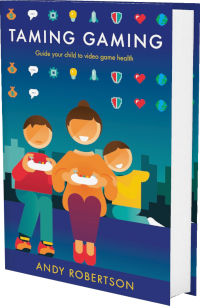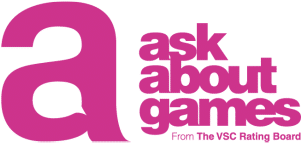 Android
Android iOS
iOS Mac
Mac Switch
Switch Wii
Wii Wii U
Wii U PC
PC PS4
PS4 PS5
PS5 Xbox One
Xbox One Xbox X|S
Xbox X|SWe've documented 21 accessibility features for Overboard, including Large Subtitles, Adjust Speed, No Quick Reactions, No Button Combos and No Repeated Pressing. Its accessibility is strongest in Visual and Controls but it also has features in Getting Started, Reading, Navigation and Audio to reduce unintended barriers.
This report is created with input from accessibility experts and the player community to help people find games that have the accessibility features they require. Once you have found potential games on the database, there are excellent specialist accessibility sites that offer in-depth reviews to guide your purchasing decisions.
Our accessibility examiner, Andy Robertson, first checked Overboard accessibility 2 years ago.
 Accessibility Notes
Accessibility Notes
The game offers advice for each new round. You can also visit the chapel to get advice and tips from the Deity you communicate with there.
You navigate the boat by tapping on the location you want to go to. Important locations are indicated with visual flashing. Holding down buttons is optional, although holding a button is how you speed through previous conversation which eases the repetition.
The game text is generally well-sized and with good contrast. However, there is some crucial pop-up text that is small and sometimes red on black that makes it hard to read, particularly on a smaller screen.
 Game Details
Game Details
Release Date: 02/06/2021
Out Now: Android, PC, Switch and iOS
Skill Rating: 13+ year-olds
Players: 1
Genres: Brain Game, Point-and-Click (Narrative and Simulation)
Accessibility: 21 features
Components: 2D Side-On, Hand-Made and Text
Developer: Inkle Studios (@InkleStudios)
Costs: Purchase cost
 Controls
Controls
We've documented 4 accessibility features for Controls in Overboard which deal with how you control the game, different options for alternative inputs and whether you can remap these settings to suit your needs.
Touchscreen
Can play with the following. Additional gestures may be required for games played with a screenreader like VoiceOver.
One Motion Targeted: Can play with touchscreen, tap and swipe or hold gesture.
Button Combinations
Specific button operation required to play
Holding Down Buttons Optional: Holding down buttons for prolonged periods (a second or more) is not required or can be switched to toggling the action on and off. This is in addition to the movement stick/button which is not considered a hold for this purpose.
Rapid Repeated Pressing Optional: Quick, repeated button pressing (more than 2 times a second) is not required, can be skipped or switched to holding a button to trigger a repeated action.
No Simultaneous Buttons: Only one button or key required at a time, in addition to direction stick(s).
Similar Games With More Accessibility Features for Controls
If you want to play Overboard, but it doesn't offer the Controls accessibility features you require, these similar games extend the Controls accessibility:
- Saltsea Chronicles (18 Controls Features)
- Paradise Killer (11 Controls Features)
- Phoenix Wright Ace Attorney (10 Controls Features)
- Genesis Noir (9 Controls Features)
 Difficulty
Difficulty
We haven’t documented any accessibility features for Difficulty in Overboard which deal with how you can adjust the challenge of play, and whether this is locked once chosen or can be adjusted as you play. The following games are similar to Overboard, and offer accessibility features for Difficulty:
- The Murder of Sonic the Hedgehog (2 Difficulty Features)
- Kraken Academy (2 Difficulty Features)
- Deathloop (2 Difficulty Features)
- Among Us (2 Difficulty Features)
 Getting Started
Getting Started
We've documented 4 accessibility features for Getting Started in Overboard which deal with what support is offered to get started with the game. This includes customising the experience when you first open the game via any onboarding processes it provides as well as tutorials and other assistance when you first start playing.
Assistance Getting Starting
These features aid your play of the game in terms of cognitive load on learning controls, dealing with pressure and coping with the environment and challenges.
Tutorials: There are helpful tutorials and instructions on how to play. Information is provided in a timely manner, with appropriate level of detail.
Reaction-Time Not Critical: Individual game actions don’t need quick reactions, or there are settings to lower the requirement for quick reactions. This means you don't need to quickly press a button in response to an on-screen prompt, target a fast-moving target or skillfully complete a scenario against the clock.
Adjust Speed: Adjust the speed of the game at critical moments or throughout, or rewind play for a second attempt, to ease reaction times. By slowing the game, you have more time to interpret what is happening and then execute your actions. It also reduces the pressure on getting things right quickly or the first time you attempt them.
Assistance For Progressing
These features aid your progress through the game offering different ways of maintaining your progression.
Assisted Progress With Hints: The game notices if you get stuck (or you can press a button) and provides information to help you progress. This can offer hints or tutorials popping up during play. This includes hints after you have died, where it can suggest strategies or difficulty settings to adjust or offer to skip past problematic levels.
Similar Games With More Accessibility Features for Getting Started
If you want to play Overboard, but it doesn't offer the Getting Started accessibility features you require, these similar games extend the Getting Started accessibility:
- Tangle Tower (10 Getting Started Features)
- Saltsea Chronicles (7 Getting Started Features)
- Paradise Killer (7 Getting Started Features)
- Deathloop (7 Getting Started Features)
 Reading
Reading
We've documented 4 accessibility features for Reading in Overboard which deal with how much reading or listening comprehension is required, how well the game provides visual and audible access to the text and whether subtitles and captions are a good fit for purpose.
Reading Level
How much reading is required to play the game's main path or story and how complex the language is. The presence of voiced characters doesn't reduce this requirement, as it's recorded as a separate datapoint.
Moderate Reading: Moderate reading required. The quantity and complexity of reading are at a level that a high school student (14-year-old) would appreciate.
Subtitles
Large Clear Subtitles: Subtitles are large, clear and of good contrast. They are at least 1/20 (46 pixels on 1080 screen) the height of a landscape screen and at least 1/40 height on portrait screens, or can be adjusted to be. We base this on the full line-height, including the space above and below the letters. Considered separately from the general text of the game, the subtitles are large, clear and of good contrast.
All Speech Subtitled (Or No Speech In Game): All spoken content has subtitles, or there is no speech in the game. This means there is no requirement to hear spoken dialogue or narrative to play the game.
Captions
Speaker Indicator and their Tone: Textual captions indicate who is speaking and their tone (or there is only ever one person speaking). This can also be indicated visually in the game with character icons or character expressions with text in speech bubbles next to the person speaking.
Similar Games With More Accessibility Features for Reading
If you want to play Overboard, but it doesn't offer the Reading accessibility features you require, these similar games extend the Reading accessibility:
- Wayward Strand (7 Reading Features)
- Heaven's Vault (7 Reading Features)
- Welcome to Elk (6 Reading Features)
- Tangle Tower (6 Reading Features)
 Navigation
Navigation
We've documented 3 accessibility features for Navigation in Overboard which deal with how the game provides guidance and assistance to navigate its worlds. These are only for games that have traversal and exploration in 2D and 3D spaces.
Clarity
Visual Directional Cues: Additional in-game visual cues that signpost where to go next and how close you are to arriving. This can be with camera movement to focus on your destination or important items. It can use light, breadcrumb trails, in-world pointers to identify your mission's target location.
Head-Up Display
Head-Up Display Navigation: Indication of where to go next with overlaid arrows, minimaps and waypoint markers. This supplements in-game visual and audible cues with additional guidance about where you are and where you need to go.
Game Map: View a map of the game world during play, with the landscape, points of interest and missions highlighted throughout the entire game. This enables the orientation of the player and the world, confirming a direction of movement and the location of destinations or points of exploration.
Similar Games With More Accessibility Features for Navigation
If you want to play Overboard, but it doesn't offer the Navigation accessibility features you require, these similar games extend the Navigation accessibility:
- The Amazing American Circus (7 Navigation Features)
- Paradise Killer (7 Navigation Features)
- The Sexy Brutale (6 Navigation Features)
- Kraken Academy (4 Navigation Features)
 Visual
Visual
We've documented 5 accessibility features for Visual in Overboard which deal with how you can adjust the visuals to suit your needs, and offer additional information if you can't hear the game.
Contrast
Medium Contrast: Game uses generally well contrasting and bright visuals, or has a slider to make this the case.
Interactive Elements
Large Game Elements: Game characters and other elements are large and distinguishable. Enemies and player characters are at least 1/6 of the height of the screen. Or there is a zoom feature to make them larger.
Visual Distractions
No Flashes: No flashing strobe effects or you can disable them. This includes the absence of flashing from dramatic visual effects, explosions or weather effects like lightning.
No Busy Backgrounds: No distracting backgrounds or you can make them static or blank. This includes the absence of other movement elements in the background that might distract or confuse the action. Where foreground contrast is high, this includes games with some movement in the background that doesn't make it overly difficult to distinguish what is happening.
Motion Sickness Friendly
Motion Sickness Friendly: Doesn't have 3D movement elements that may trigger motion sickness, like motion blur, depth of field and field-of-vision. Or includes the ability to disable motion blur, depth of field and field-of-vision effects.
Similar Games With More Accessibility Features for Visual
If you want to play Overboard, but it doesn't offer the Visual accessibility features you require, these similar games extend the Visual accessibility:
- The Amazing American Circus (7 Visual Features)
- Suzerain (7 Visual Features)
- Paradise Killer (7 Visual Features)
- Pendragon (7 Visual Features)
 Audio
Audio
We've documented 1 accessibility feature for Audio in Overboard which deals with how you can adjust the audio of the game and whether audio cues compensate for aspects of the game that are hard to see.
Play Without Hearing
Play Without Hearing: No audio cues are necessary to play the game well.
Similar Games With More Accessibility Features for Audio
If you want to play Overboard, but it doesn't offer the Audio accessibility features you require, these similar games extend the Audio accessibility:
- The Sexy Brutale (3 Audio Features)
- Hitman (3 Audio Features)
- Deathloop (3 Audio Features)
- Pendragon (3 Audio Features)
System Accessibility Settings
In addition to the accessibility features provided in the game, you can also use system-wide accessibility settings:
Android
Android has accessibility settings including ways to navigate and interact, although not all games support this.
Nintendo Switch
Nintendo Switch has some built-in features, including a lockable zoom, that can be used on all games.
PC
Windows has extensive accessibility features. Some, like colour correction, work with games. Lots of accessibility software can be used with PC games, from voice recognition to input device emulators.
iOS
iOS has a very extensive suite of accessibility settings including ways to navigate with voice and comprehensive screen reading, though most of the features don't work with games.
Read more about system accessibility settings.
Accessibility Report supported by VSC Rating Board, PlayabilityInitiative and accessibility contributors Andy Robertson












